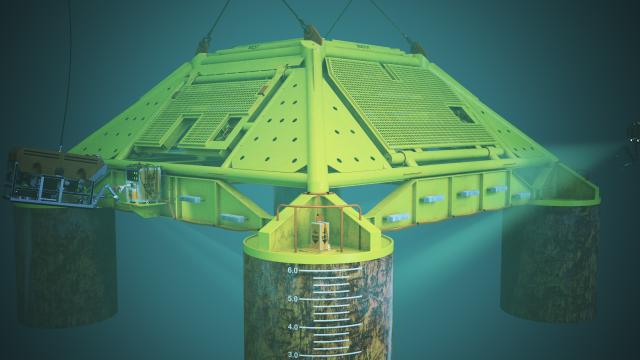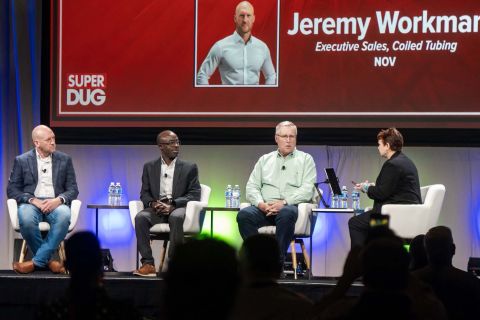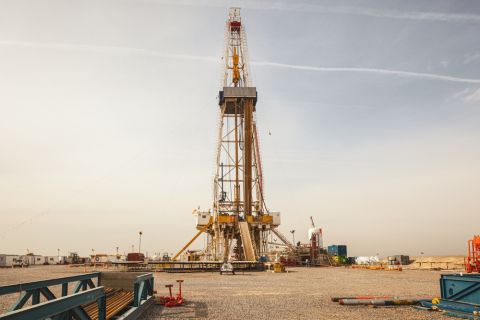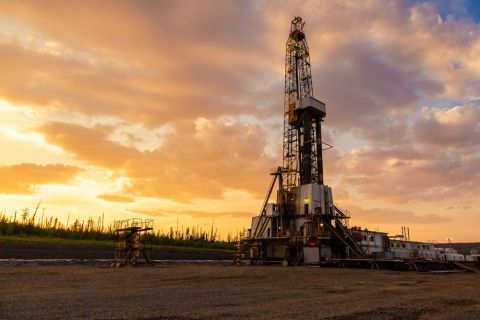
Ashtead Technology’s Defl ection Monitoring System was used to monitor the successful installation of an Integrated Satellite Structure at the Northern Lights CCS project. (Source: Ashtead Technology)
[Editor's note: This story originally appeared in the April 2020 edition of E&P. Subscribe to the magazine here.]
Catching CO2 is not a new idea in the oil and gas industry. We’ve been putting the fizz back in wells since 1972 with the first commercial CO2 flood that occurred in Scurry County, Texas, at the SACROC Unit. It is a field still in operation today.
The enabling technologies of CO2 EOR, and those of carbon capture and storage (CCS), have evolved tremendously in the more than 45 years since SACROC. However, there is still more to be done to make it useful in larger-scale applications.
According to the Global CCS Institute, more than 260 million tonnes (MMtonnes) of CO2 emissions from human activity have been captured and stored. Global CCS projects operating or under construction have about 40 million tonnes per annum (mtpa) of capture and storage capacity.
The International Energy Agency’s World Energy Outlook 2019 identified CCS as critical to meeting emissions reduction targets at the lowest possible cost. The agency also identified in a May 2019 technology report that industrial production accounts for one-quarter of CO2 emissions from energy and industrial processes, and 40% of global energy demand. A growing and increasingly urbanized global population ensures that demand for cement, steel and chemicals remains strong. The future production of these materials must also be more efficient.
“One-third of industry energy demand is for high-temperature heat, for which there are few mature alternatives to the direct use of fossil fuels. Process emissions, which result from chemical reactions and therefore cannot be avoided by switching to alternative fuels, account for one-quarter (almost two gigatonnes of CO2) of industrial emissions,” the report stated.
One way CCS projects in Europe have evolved over the years is in how the projects are planned. Rather than building full chain solutions for a single emission source, there are hubs and clusters. For example, the Norwegian Full-Scale Project will capture CO2 at two industrial facilities on the eastern coast of Norway and then transport the liquefied and pressurized CO2 by ship to the Northern Lights onshore terminal on the west coast. From there, it is offloaded into intermediate storage tanks for continuous transport of CO2 by pipeline to subsea injection wells for permanent storage in a northern North Sea reservoir, according to Equinor.
In March, Equinor and its partners in the project, Shell and Total, announced the drilling of confirmation well 31/5 7 Eos, located south of the Troll Field in the North Sea, had completed. The purpose of the drilling was to determine the suitability of the reservoir in the Johansen Formation for CO2 storage.
The well is located about 2,500 m below the seafloor and is the first one drilled in exploitation license 001. If the Northern Lights project is sanctioned, the well will be used for injection and storage of CO2, according to the release.
Recommended Reading
The ‘Necessary Evil’ of Four-mile Laterals
2024-05-23 - While extended length lateral wells can lead to massive profits, the risk might not always be worth it. At Hart Energy’s SUPER DUG, Diamondback Energy, SLB, NOV and others weighed the risk and rewards of drilling three- and four-mile laterals.
E&P Highlights: July 1, 2024
2024-07-01 - Here’s a roundup of the latest E&P headlines, including the Israeli government approving increased gas export at the Leviathan Field and Equinor winning a FEED contract for the all-electric Fram Sør Field.
Crescent Energy: Bigger Uinta Frac Now Making 60% More Boe
2024-05-10 - Crescent Energy also reported companywide growth in D&C speeds, while well costs have declined 10%.
Blankenship, Regens: More Demand, More M&A, More Regs
2024-05-23 - In 2024, the oil and gas industry is dealing with higher interest rates, armed conflicts in Europe and the Middle East, rising material costs, a decrease in Tier 1 acreage and new policies and laws.
Goodbye Manual Control: Vital Energy’s Automation Program Boosts Production
2024-07-12 - Production, ESP efficiency soared when the company automated decisions with AI at the edge.





